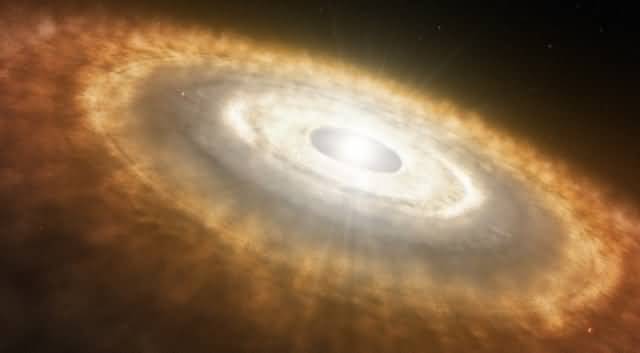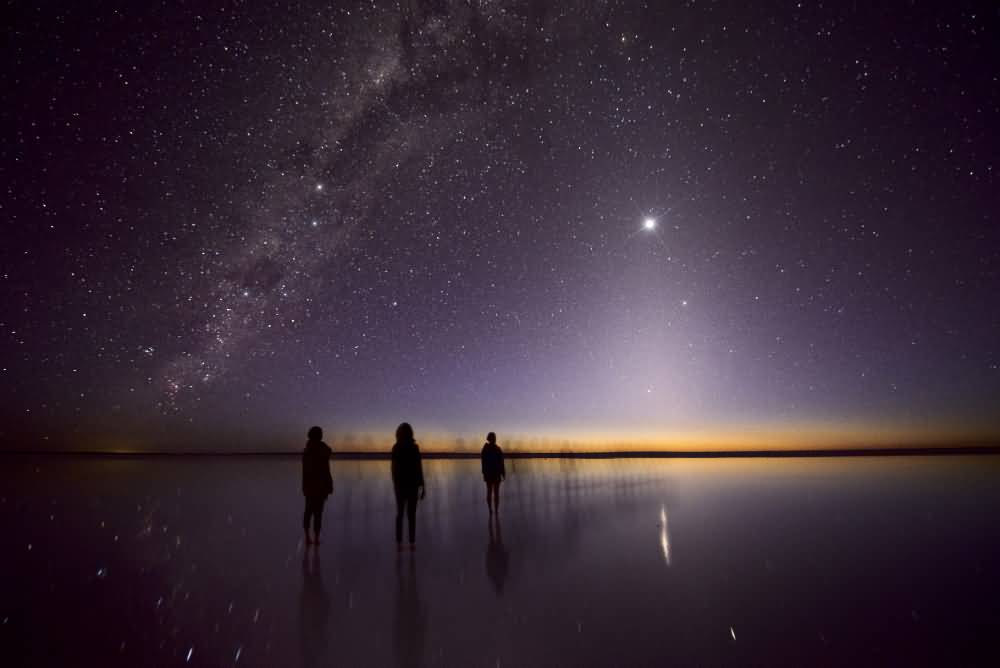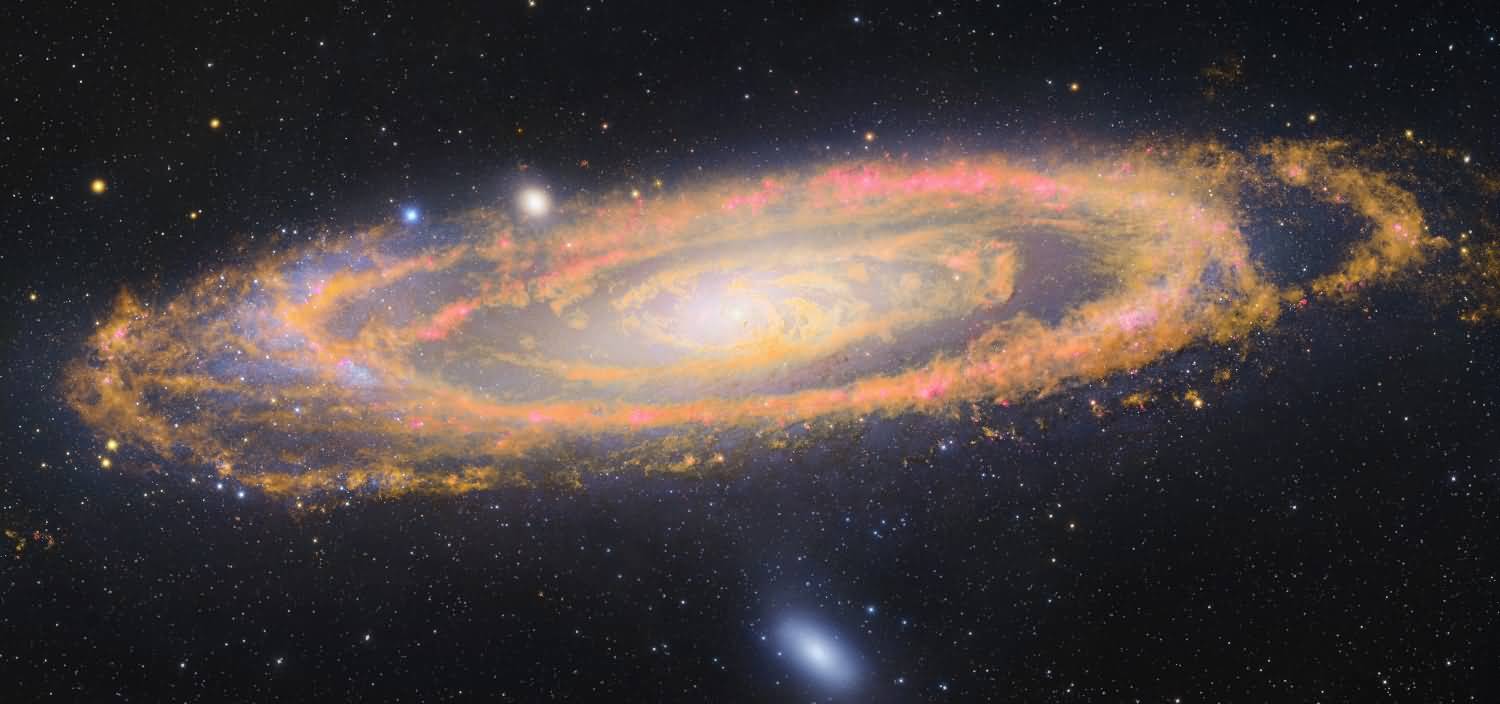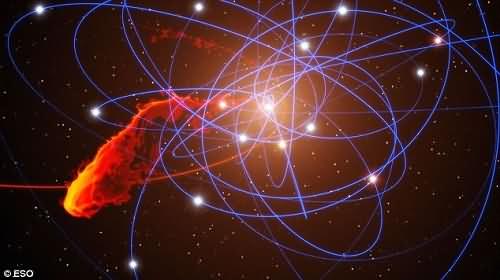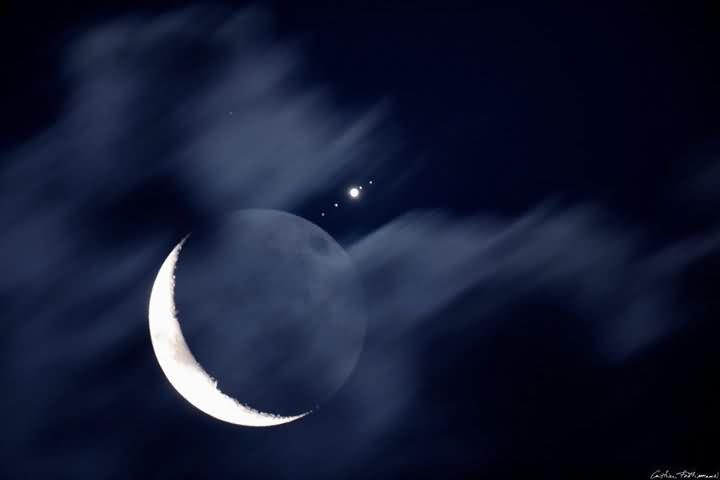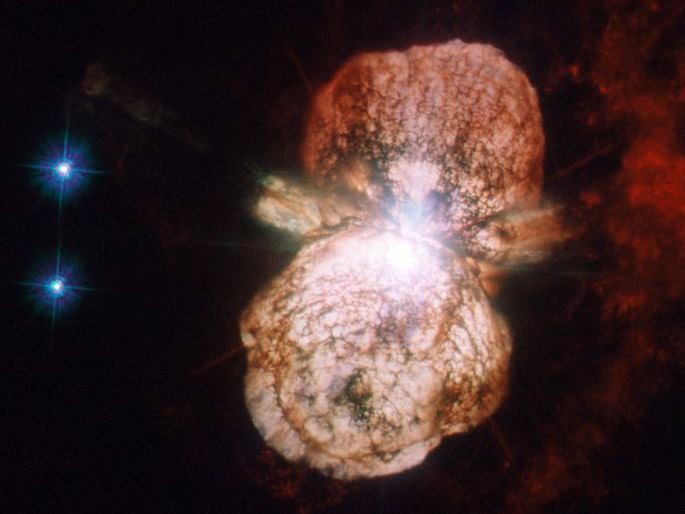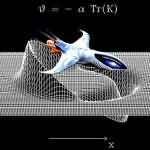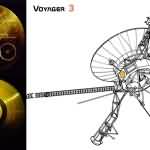Giant Stars in Orion Don't Allow Planets
A team of astronomers from Canada and the United States used the ALMA telescope to understand the relationship between O-type stars and protostars in the Orion nebula. Their data show that the gas cloud surrounding the O-type stars, which is within 0.1 light-years (approximately 1 trillion km) of the protostars, is swept away within a few million years, before planets can form.
Protostars
Protostars are dense masses of gas within massive clouds of interstellar space. They are the early stages of star formation. For a solar-mass star, the protostar formation process takes 10 million years. At the end of this period, it can become a star. I will write a more detailed article about these protostars in the future.

This illustration shows two protostars at varying distances from an O-type star. The middle one is too close to the O-type star and has lost its gas disk, while the bottom one is far enough away to retain its gas disk.
NRAO/AUI/NSF; B. Saxton
Giant Stars
We could say that O-type stars are actually a category. They are divided into many different types of stars. But all of them are utter monsters compared to the Sun. You could say they live by the motto "live fast, die fast." Due to their enormous mass, they burn through their fuel very quickly and explode as supernovas. Their temperatures are much higher than our Sun's, and their luminosity is hundreds of times greater. When they explode as supernovas, they expel their heavy elements, their outer shells, into space, causing nebulae to form in interstellar space, thus stimulating the formation of new stars. Of course, as the amount of heavy elements increases each time, this formation will eventually cease. In fact, the source of this article can be said to begin here.
Throwing the Gas Disk
Stars like our Sun formed in nebulae in interstellar space, just like the Orion Nebula. After a few million years, the gas cloud surrounding the protostar would also clump together, and planet formation would begin. If this process continued undisturbed, we would have a star system resembling a nebula, with planets and asteroids of all sizes, in approximately 10 million years. However, if a protostar were within 0.1 light-years of these O-type stars, it would be exposed to the massive star's high-energy ultraviolet rays and lose its dust cloud before planet formation could occur. These high-energy rays would heat the gas cloud, causing it to escape the protostar's gravity and be flung into outer space. This would lead to the formation of planetless, solitary, single-star stars. At the same time, the high energy output generated when O-type stars explode in supernovas would cause nearby protostars to lose this gas disk.

